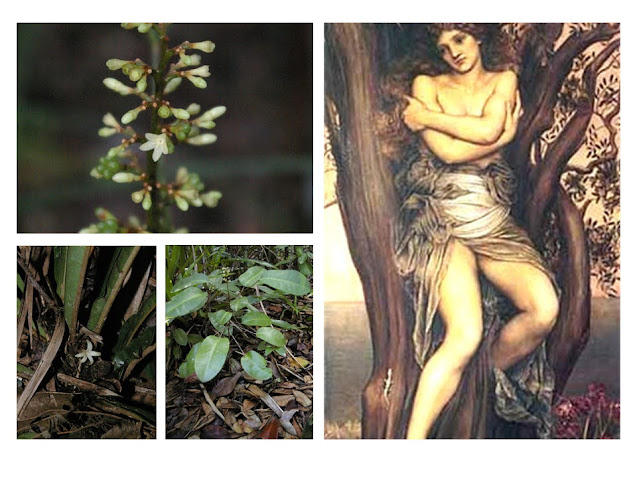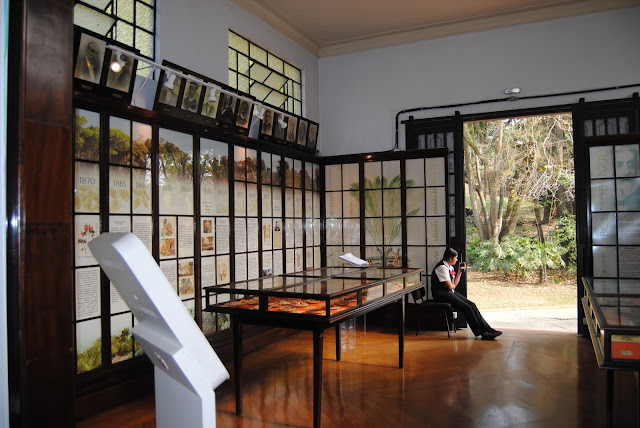Dryades, um novo gênero de plantas da família Rutaceae (a família da laranja e dos limões) foi publicado na revista Molecular Phylogenetics and Evolution. O gênero é formado por cinco espécies de arbustos ou pequenas árvores de área florestadas no Domínio da Mata Atlântica, sendo endêmico deste Domínio. O estudo contou com dados moleculares, morfológicos e anatômicos. O estudo pode ser acessado AQUI
O nome Dryades é uma referência à Região Fitogeográfica brasileira Dryades, escolhida pelo botânico Alemão Carl Friederich von Martius (1840-1869) para representar o Domínio da Mata Atlântica. Martius se inspirou na mitologia grega para dar nomes de ninfas (musas) às suas regiões fitogeográficas - Driades (Mata Atlântica), Oréades (Cerrados do Brasil Central), Náiades (Amazônia), Hamadríades (Caatinga) e Napeias (florestas de Araucária no Sul do Brasil). As driades, na mitologia grega, são ninfas das árvores, principalmente de carvalhos, mas associadas às florestas em um sentido geral.
O nome Dryades também celebra os 201 anos do final da viagem que Martius e seu colega Johannn Baptist von Spix (1781-1826, naturalista alemão) realizaram no Brasil de 1817 a 1820. Esses dois grandes naturalistas vieram como parte da Expedição Austríaca, uma expedição científica que explorou o nosso país, com proeminência nas áreas de Botânica, Zoologia e Etnografia, durando de 1817 a 1835.
O estudo foi realizado por equipe liderada pelo Prof. Milton Groppo (Departamento de Biologia, Faculdade de Filosofia, Ciências e Letras de Ribeirão Preto - USP) e contou com a participação de alunos e colegas brasileiros e estrangeiros. Fapesp (processo 2016/06260-2), CNPq e Capes foram as agências de fomento.
Autores: Milton Groppo, LuisaJório Cavalcante de Lemos, Paola de Lima Ferreira, CarolinaFerreira, CarlaPoleselli Bruniera, Neuza Maria de Castro, José Rubens Pirani, Juliana Hanna Leite El Ottra e Jacquelyn Ann Kallunkie
https://www.sciencedirect.com/science/article/abs/pii/S1055790320302438
----------------------
Dryades, a new genus of plants in the family Rutaceae (the family of orange and lemons) was published in the journal Molecular Phylogenetics and Evolution. The genus is formed by five species of shrubs or small trees from forested areas in the Atlantic Forest, being endemic to this Domain. The study used molecular, morphological and anatomical data and can be accessed HERE
The name Dryades is a reference to the Brazilian Dryades Fitogeographic Region, chosen by the German botanist Carl Friederich von Martius (1840-1869) to represent the Domain of the Atlantic Forest. Martius was inspired by Greek mythology to give names of nymphs (muses) to his Brazilian Phytogeographic Regions - Driades (Atlantic Forest), Oréades (Cerrados do Central Brasil), Naiades (Amazonia), Hamadríades (Caatinga) and Napeias (Araucaria forests in the South of Brazil). Dryads, in Greek mythology, are tree nymphs, mainly of oaks, but associated with forests in a general sense.
The name Dryades also celebrates the 201 years since the end of the journey that Martius and his colleague Johannn Baptist von Spix (1781-1826, German naturalist) made in Brazil from 1817 to 1820. These two great naturalists came as part of the Austrian Expedition, an expedition that explored our country, with prominence in the areas of Botany, Zoology and Ethnography, lasting from 1817 to 1835.
The study was carried out by a team led by Prof. Milton Groppo (Department of Biology, Faculty of Philosophy, Sciences and Letters of Ribeirão Preto - USP) and counted on the participation of Brazilian and foreign students and colleagues. Fapesp (process #2016/06260-2), CNPq and Capes were the funding agencies.
Authors: Milton Groppo, LuisaJório Cavalcante de Lemos, Paola de Lima Ferreira, CarolinaFerreira, CarlaPoleselli Bruniera, Neuza Maria de Castro, José Rubens Pirani, Juliana Hanna Leite El Ottra e Jacquelyn Ann Kallunkie
https://www.sciencedirect.com/science/article/abs/pii/S1055790320302438
 |
| Uma Dríade na sua árvore (por Mary Evelyn De Morgan) |
 |
| Dryades gaudichaudiana - Guapimirim - Rio de Janeiro (foto Milton Groppo) |
 |
| Dryades concinna - Itacaré - Bahia (foto Milton Groppo) |
 |
| Dryades concinna - Itacaré - Bahia (foto Milton Groppo) |
 |
Carl Friedrich Philipp von Martius (1794-1868), botânico, naturalista e entógrafo alemão (por J.Kuhn nach Merz)
|
 |
| As Regiões Fitogeográficas de Martius (1858) para o Brasil. A Mata Atlântica (Dryades) marcada em verde escuro. Fonte: Flora brasiliensis |





























































































